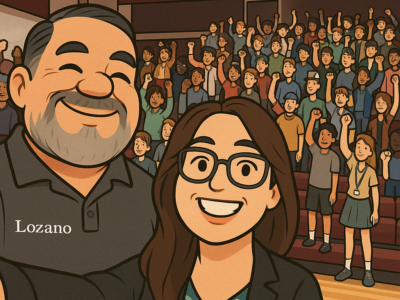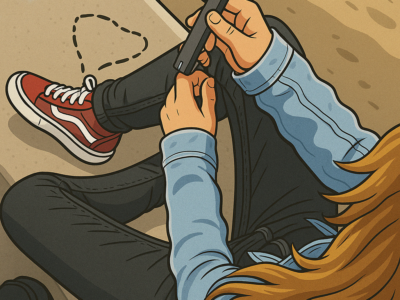Working at Google seems like it would be a dream come true. There are rock walls, $10,000 nap machines, and the workers are even allowed to bring their pets to work. As if that wasn’t enough, the Google company also offers a plethora of food. There are snack stations, vending machines, and even a cafeteria with free gourmet chef-prepared meals. As amazing as working at Google may be, workers are allegedly warned that they should expect to gain about 15 pounds when they start working there, and many ex-workers have reported losing weight after quitting without knowingly changing any habits.
What does this have to do with prevention and healthy lifestyle choices? Well, we know that many of you are either working from home or otherwise trying to figure out how to navigate life during the COVID-19 pandemic, which likely has taken a toll on your waistline.
“Children look to their parents as a model for how to cope with stress.”
Stephanie Manasse, Clinical research & Professor, Drexel University
While it may seem obvious that if you’re around delicious (and in the case of Google employees, gourmet food) all, you will naturally gain weight, but when we really stop and look at the psychology behind what is happening, and how Google made small changes that had big impacts on its workers, we can use that information to start understanding our own habits, and maybe start making some healthier ones.
A lot of human behavior is determined by unconscious drives and desires. One drive that is incredibly strong in humans is the drive to be lazy. That’s right, our 7th grade math teachers were right, we’re all incredibly lazy; and that’s ok! Humans will almost always take the easy way out of things, we tend to choose the path of least resistance. That’s why if you talk to nearly anyone who is overweight, and ask them why, a lot of them will say it’s just easier to get fast food than to eat properly, and similarly, if you ask people who are underweight why, many of them will say that they’re just lazy and forget to eat. How did Google use this knowledge to get their collective workers to consume 3.1Million less calories in just seven weeks?
Increased water consumption
We all know that water is important, and that we are probably not drinking enough of it. Even still, it’s just easier to grab a soda than it is to drink water, not only does it taste sweeter and give our brain that excitement, but it actually is easier. Kiana Docherty, in her video that inspired this blog, points out the steps in drinking a soda vs tap water. She explains that to drink a soda, the steps are: 1. Go to the fridge, 2. Open a soda. Which takes all but three seconds. To get a glass of tap water though, the steps are 1. Go to the cabinet, 2. Pick out a glass, 3. Let the tap run to get cold, 4. Wait for the glass to fill, 5. Shut off the tap. Now this may not seem like a huge difference but keeping in mind that we will often take the path of least resistance, it’s clear to see why more people will choose soda over water. What did Google do? They moved the soda section slightly further away from the worker’s desks and added a closer station that had cold water in easy to use dispensers infused with fresh fruit/vegetables, like lemon and cucumber. This not only made it more visually enticing, but it made it barely easier than getting a soda, which was enough to get their workers to drink more water. Let’s look at how you can you use this to hack your quarantine?
If you don’t buy juice or soda, then it’s more work to go to the store to get it than it is just to get water. Alternatively, keep cold water in the front of the fridge, and sodas or juices in the harder to reach back of the fridge. It can also be very helpful to fill up a large cup or bottle of water to keep at your desk or workspace, this visual cue reminds us to drink more water more often.
Reduce Snacking
Google workers are free to drink as much coffee as they want, they have free coffee stations located near their workspaces, and nearly all of those coffee stations are located near the snack bar. They decided to run a test, they moved half of the snack bars only five feet away from the coffee stations, and kept the other half where they were. What they found was that with the snack bar close by, about 20% of people would take a snack with their coffee, but when the snack bar was moved only five feet away, only about 12% of people would take a snack with their coffee. Five feet is a small change, but it’s that cue of having the snacks right there, that prompts us to grab one, even when we really don’t want a snack. So what can you do in your home?
Keep healthy snacks easy to grab. Chop up some carrot sticks ahead of time and store them in a jar of water in the fridge. Keep apples or berries prominently displayed. And again, you can put the chips and candy in a harder to reach space in your kitchen, but it’s also all around easier to not buy them in the first place. When you’re craving chips, is it really worth getting in the car, driving all that way, and putting on your mask just for a salty treat?
Reducing Availability of Junk Food
While working at Google, workers had plenty of choice when it came to food, they had candy -store-style glass candy jars filled with the colorful treats, and plenty of food choices in the buffet-style cafeteria. Now, while as much of us wish we could have private chefs cooking us gourmet food on-demand, unfortunately the majority of us are responsible for our own food. However, that can be a positive because it also means we have complete control over curating the space we want our houses to be. At Google, they took all the treats like Skittles and Oreos, and instead of having them prominently displayed, they put them into opaque jars with a label on the outside, that way people could still have all the snacks they wanted, but they didn’t have that visual cue enticing them. The other thing they did was they rearranged the buffet so that the healthiest options were featured first, you had to walk through all of the fruits and vegetables and salads in order to get to the unhealthier foods.
We can use this in our own homes by having ready to eat healthy food available. Prepare a salad ahead of time for lunch, buy a rotisserie chicken at the supermarket instead of getting fried chicken, and put your unhealthier snacks into places where you don’t see them without effort, that way you won’t be cued to want cookies even when you weren’t already craving cookies.
Wherever you’re working from today, it’s important to maintain physically and emotionally healthy habits, and one way we can fuel our brains to work hard through this difficult time is by keeping fresh produce visible and available, making it easier to drink water, and making those higher-calorie treats at least a little more difficult to get. As you start to make these changes, you’ll be surprised to find out how much of a big impact small changes really can make. We talk a lot about making small changes that can help you reach your healthy-fitness goals in our nutrition webinar! Whether you’re trying to lose weight, evaluate bad eating habits, or just live an overall healthier lifestyle, our webinar provides fact-based, non-judgmental, easy to understand information on food, health, and nutrition.
RESOURCES
Links:
Prevention Plus’ nutrition webinar is found here:
https://raylozano.com/online-presentations/
https://www.webmd.com/parenting/raising-fit-kids/weight/features/talk-teen-obesity
https://www.sciencedaily.com/releases/2020/04/200403124929.htm
https://www.latimes.com/lifestyle/story/2020-04-03/stress-eating-during-coronavirus-quarantine


